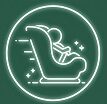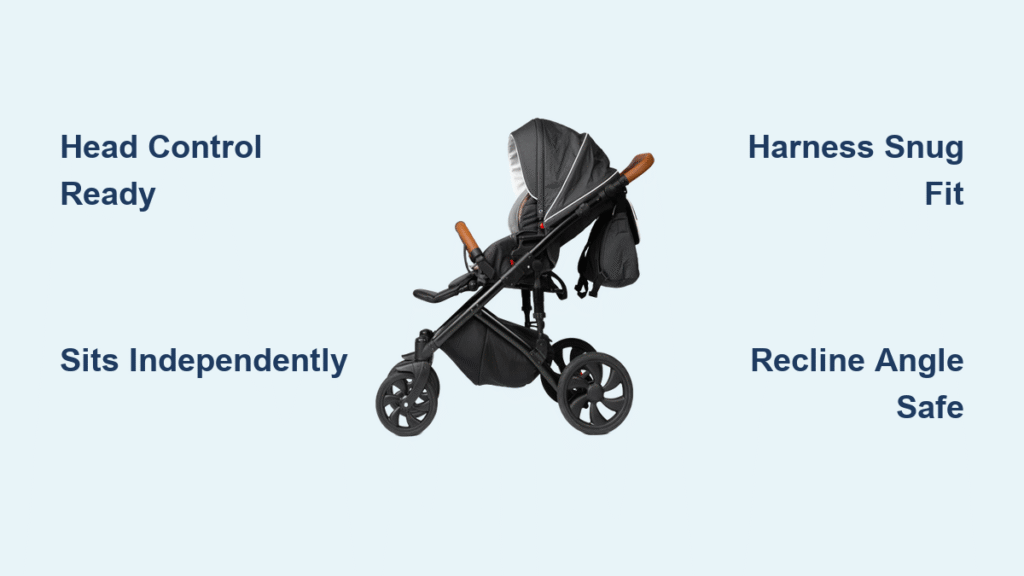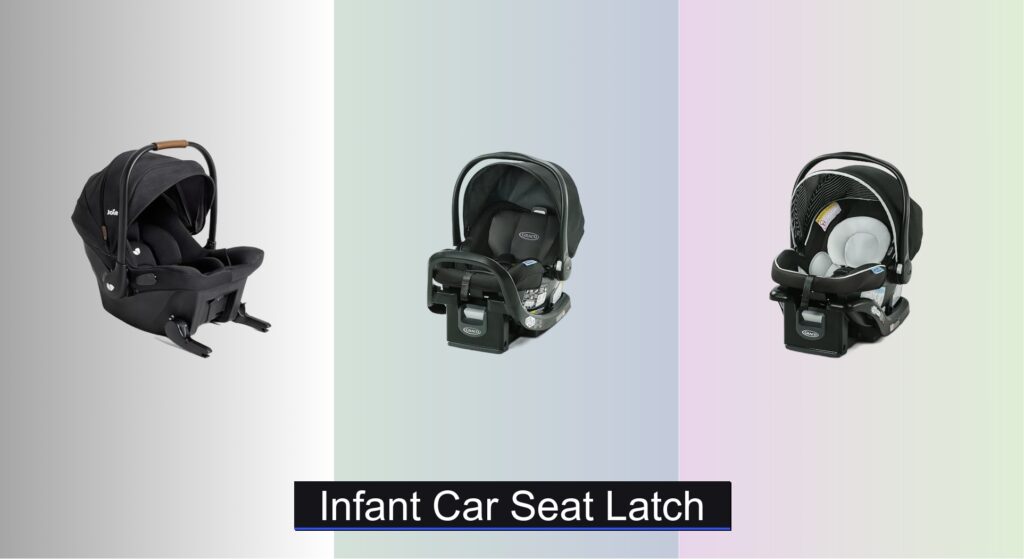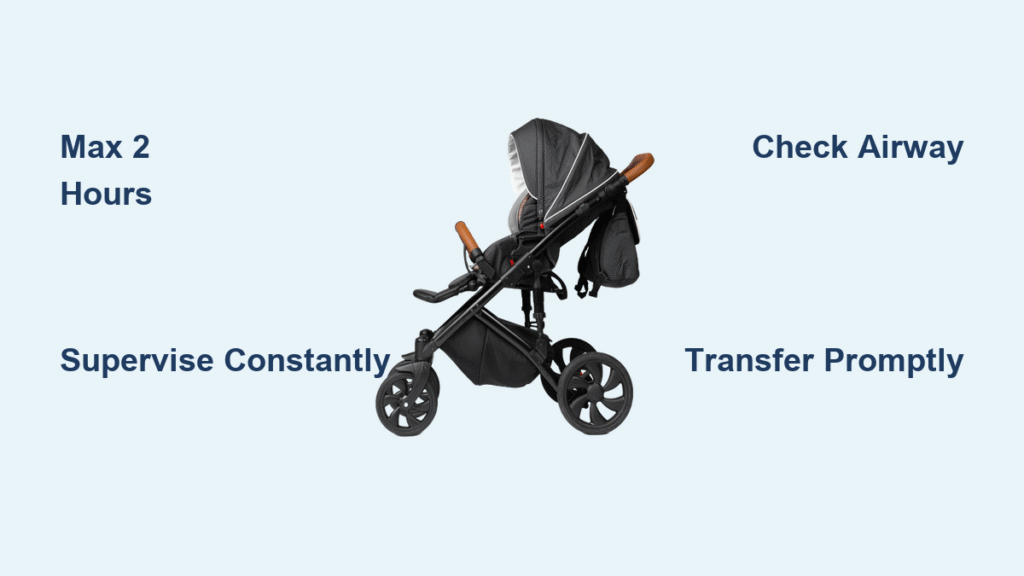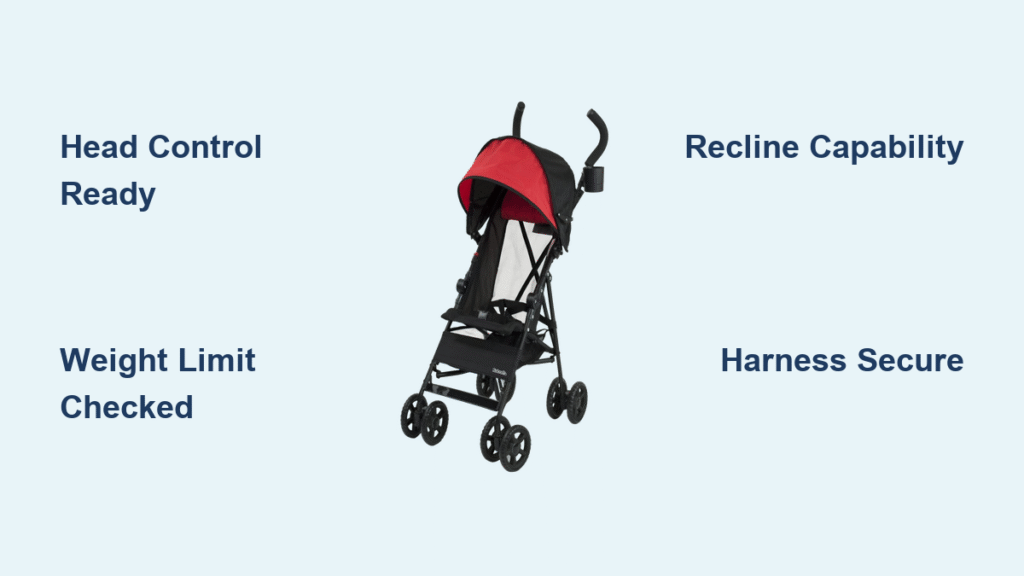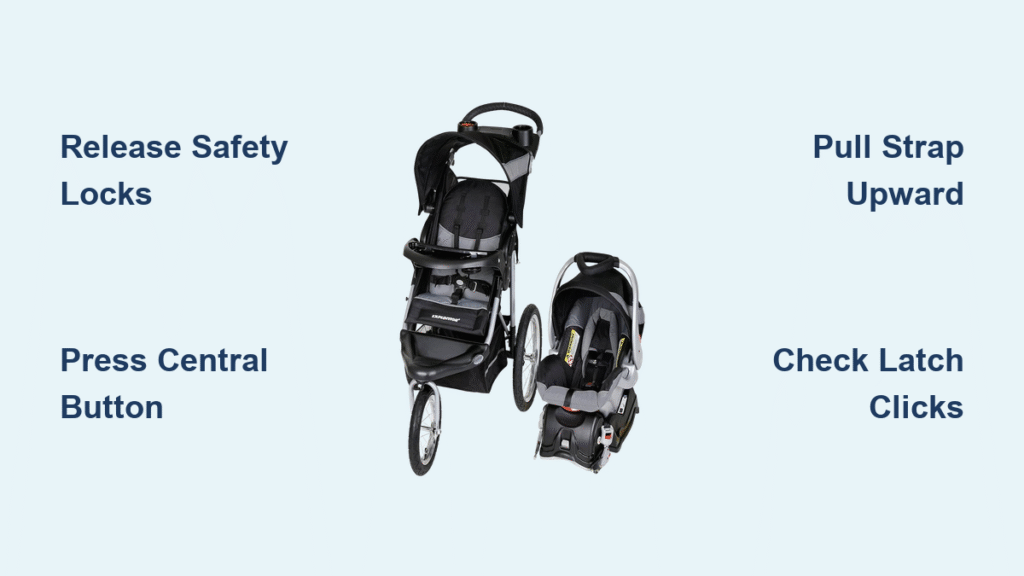That moment when your baby can finally sit upright in the stroller—no longer needing the flat bassinet—feels like a major victory. But rushing when baby can sit in stroller transitions risks airway safety and spinal development. Your infant’s physical abilities, not the calendar, determine readiness. Two non-negotiable skills must align: rock-solid head control and independent sitting balance. Most babies hit these between 6-8 months, but your child’s unique development timeline is the true compass. Ignoring these signs could lead to positional asphyxia or spinal strain during outings.
Understanding when can baby sit in stroller safely prevents dangerous assumptions. Pediatricians emphasize that age alone is unreliable—some 5-month-olds ace sitting tests while others need 9+ months. Premature babies follow adjusted timelines. This guide cuts through marketing hype to give you actionable checklists, home tests, and stroller configuration rules verified by child development experts. You’ll learn exactly how to assess readiness, avoid common pitfalls, and choose the right setup for stress-free adventures.
Head Control Milestone Check
Your baby’s neck strength forms the foundation for safe upright stroller rides. Without consistent head stability, the chin can slump toward the chest during movement, compressing airways—a silent danger since infants can’t reposition themselves. This skill typically emerges at 3-4 months but varies significantly.
Test Head Stability at Home
Perform this quick assessment daily once your baby shows head control during trolley time. Sit your infant on your lap with hands lightly supporting their ribcage. Gently tilt their torso left, then right. Watch their head: A ready baby keeps it centered without bobbing or collapsing toward their shoulder. Key green flags include zero chin-to-chest contact, visible space between chin and sternum, and no ear-to-shoulder drooping when fatigued.
Critical warning: If their head flops forward or sideways during this test, revert to bassinet mode immediately. Premature babies or those with low muscle tone often need extra months of flat positioning. Never force upright seating—positional asphyxia can occur without obvious distress signals.
Independent Sitting Requirements

Head control alone isn’t enough. Your baby must demonstrate core strength to maintain spinal alignment without support. This skill prevents dangerous leaning against harness straps, which can restrict breathing during bumpy walks.
Visual Sitting Assessment
Place your baby in a slightly reclined bouncer (135-degree angle) for 5-10 minutes. A ready infant shows a straight spine from crown to tailbone, minimal side-to-side sway (under 15 degrees), and the ability to self-correct posture when off-balance. If they slump forward, collapse to one side, or fatigue within minutes, they’re not stroller-ready.
Core Strength Building Activities
Daily tummy time accelerates readiness—start with 3-minute sessions 3x/day, building to 30 minutes total. Place high-contrast toys just beyond reach to encourage neck lifting and core engagement. Avoid seated props like Bumbo chairs; they create false confidence by supporting weak muscles. True readiness comes from organic strength development.
Age Guidelines vs. Development Reality
While 6-8 months is the typical when baby can sit in stroller window, rigid age cutoffs ignore developmental diversity. Some babies sit independently at 5 months; others need 10+. Focus on observable skills, not birth certificates.
Developmental Timeline Overview
- 3-4 months: Head control emerges during trolley time (but not yet stroller-ready)
- 5-6 months: Sitting with support becomes comfortable (bassinet still required)
- 6-8 months: Independent sitting typically achieved (stroller transition possible)
- 8+ months: Ready for jogging strollers with extra jostling
Pro tip: For premature babies, use adjusted age (birth date plus weeks premature). A baby born 6 weeks early shouldn’t attempt upright seating before 7 months adjusted age. Always consult your pediatrician for preemies—they may recommend modified assessments.
Stroller Configuration by Stage
Your stroller setup must match your baby’s exact developmental stage. Using the wrong configuration risks spinal misalignment or harness slippage.
Newborn Stage (0-3 Months)
Bassinet attachments or fully reclining car seats are mandatory. Newborns lack head control and need complete spinal support. Their head must never dangle forward—this compresses airways. Discontinue bassinet use once rolling attempts begin (typically 4-6 months).
Transition Stage (3-6 Months)
Only attempt this if your baby passes the head control test. Use a 135-degree recline to prevent chin-to-chest positioning while allowing world observation. Never force upright seating at this stage—many babies still need bassinet naps during longer outings.
Upright Stage (6+ Months)
With independent sitting confirmed, transition to standard seats. Parent-facing models let you monitor posture during early upright rides. Forward-facing seats are acceptable once baby consistently maintains balance. Most babies reach this stage between 6-8 months, but when can baby sit in stroller depends entirely on their physical readiness.
Safety Checks Before Every Ride
Skipping these checks risks harness failure or positional asphyxia—even for developmentally ready babies.
Harness Positioning Perfection

A 5-point harness (shoulders, waist, crotch) is non-negotiable. Position shoulder straps at or just below shoulder level—they’ll slip over ears if too high. The chest clip must sit at armpit height to prevent upward migration during movement. Straps should be snug (one finger fits flat against chest).
Recline Angle Assessment
“Upright” stroller seats often recline 10-15 degrees. Verify this prevents forward head slump—your baby’s chin should never touch their chest. If it does, increase recline immediately or revert to bassinet mode. This is critical for safety during naps.
Weight and Height Verification
Check your manual’s minimum requirements—most require 15-20+ pounds and sitting ability. Underweight babies risk harness slippage. A 16-pound baby with strong core control is safer than a 22-pound baby who still slumps.
Common Transition Mistakes
Eagerness to ditch the bulky bassinet leads parents into dangerous errors.
Rushing the Timeline
Using upright seats before head control risks positional asphyxia. Airway compression can reduce oxygen without crying or visible struggle—babies may simply fall into dangerous sleep. If your baby’s head nods forward during walks, they’re not ready.
Misusing Accessories
Adding head supports or rolled blankets to prop up an unready baby creates new hazards. These items shift during movement, potentially wedging the head against straps. Never modify strollers with aftermarket products.
Extended Sitting Sessions
Limit continuous upright time to 2 hours max, even for ready babies. Prolonged sitting strains developing spines and restricts movement needed for motor skill progression. Take breaks for tummy time on park blankets during long outings.
Choosing the Right Stroller Setup

Your baby’s current stage—not convenience—should drive stroller selection.
Bassinet Strollers for Newborns
Opt for ventilated, flat-surface bassinets (e.g., Mompush Wiz) for 0-4 months. Avoid models requiring infant car seats—they lack true flat positioning. Discontinue use once rolling begins to prevent tipping hazards.
Convertible Travel Systems
Single-chassis systems (bassinet + car seat + toddler seat) offer seamless progression. Look for one-hand fold mechanisms and adjustable handlebars. These eliminate multiple purchases while adapting to your baby’s growth.
Lightweight Options for Ready Babies
Once sitting independently, compact strollers like Mompush Lithe V2 provide portability. Ensure even lightweight models include proper 5-point harnesses and adequate recline for tired moments—never sacrifice safety for convenience.
Special Considerations for Preemies
Premature babies follow adjusted developmental timelines. A baby born 8 weeks early needs those extra weeks added to typical milestones.
Pediatrician Consultation Importance
Always discuss stroller transitions with your pediatrician for preemies or medically fragile infants. They may recommend specialized assessments or delayed timelines based on individual muscle tone.
Modified Testing Approach
Use gentler movements during head control tests for preemies. Their muscle development progresses more gradually—what seems “ready” at 6 months chronological age might require waiting until 8 months adjusted age.
Quick Transition Readiness Checklist
Before switching to upright seating, verify these critical boxes:
☐ Head stays steady during gentle torso movements (no chin-to-chest contact)
☐ Sits upright unassisted for 10+ minutes without fatigue or slumping
☐ Meets weight minimums per stroller manual (typically 15-20+ lbs)
☐ 5-point harness fits snugly with straps at armpit/chest level
☐ Seat reclines sufficiently to prevent forward head slump
☐ Pediatrician approves transition for preemies or developmental concerns
Once all indicators align, your baby can safely enjoy the world from their upright stroller seat. Remember: when can baby sit in stroller isn’t about convenience—it’s about honoring their unique developmental journey. Prioritize safety checks on every outing, and you’ll transform walks into joyful adventures where both of you thrive. For ongoing guidance, revisit this checklist monthly as your baby grows into new milestones.
